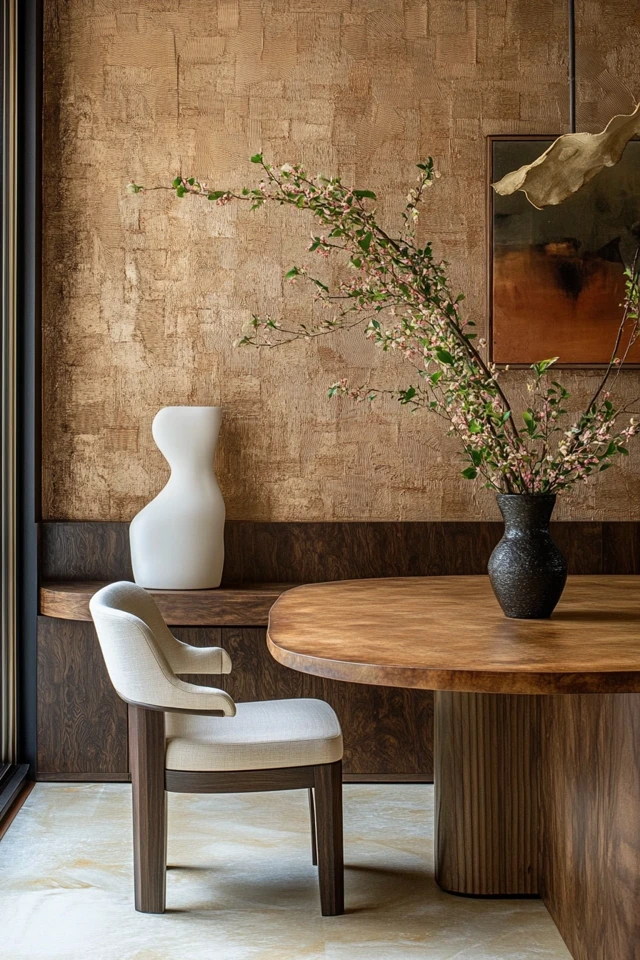Introduction
Textured walls have a way of bringing depth, character, and intrigue to a room. Whether it’s subtle shiplap, intricate plaster, exposed brick, or bold wallpaper, texture creates visual interest that can elevate any space. However, in small spaces, textured walls are often seen as risky—they can make a room feel cramped or visually overwhelming if not done carefully. The good news is, with the right approach, textured walls can actually enhance a small space, making it feel dynamic, cozy, and uniquely yours.
I remember designing my first studio apartment, where a small bedroom felt flat and uninspiring with its plain, white walls. Adding a textured wallpaper in a soft, neutral tone completely transformed the room. It created an illusion of depth and added warmth without taking up any extra physical space. Paired with minimalist furniture and strategic lighting, the texture became a design feature that made the room feel cozy rather than cluttered. That experience showed me that textured walls can be a small space’s secret weapon when handled with intention.
In this guide, we’ll explore how to incorporate textured walls into small spaces in a way that enhances their charm and maximizes their potential. Whether you’re drawn to rustic brick, sleek paneling, or bold patterns, these tips will help you make textured walls work beautifully without overwhelming your space.
The Perfect Design for You
Textured walls are perfect for anyone who wants to add character and personality to a small space without relying solely on furniture or accessories. They’re particularly ideal for renters or homeowners who want to create a distinctive look in areas like bedrooms, entryways, bathrooms, or small living rooms.
Imagine a compact living room with a single brick accent wall that adds warmth and contrast to the modern decor. Or picture a bathroom with vertical shiplap that elongates the walls and creates a clean, spa-like atmosphere. These textures not only draw the eye but also create a sense of dimension that enhances the room’s overall feel.
Whether your style is minimalist, industrial, farmhouse, or eclectic, textured walls can elevate your small space and make it feel like a thoughtfully designed retreat.
Picture Gallery
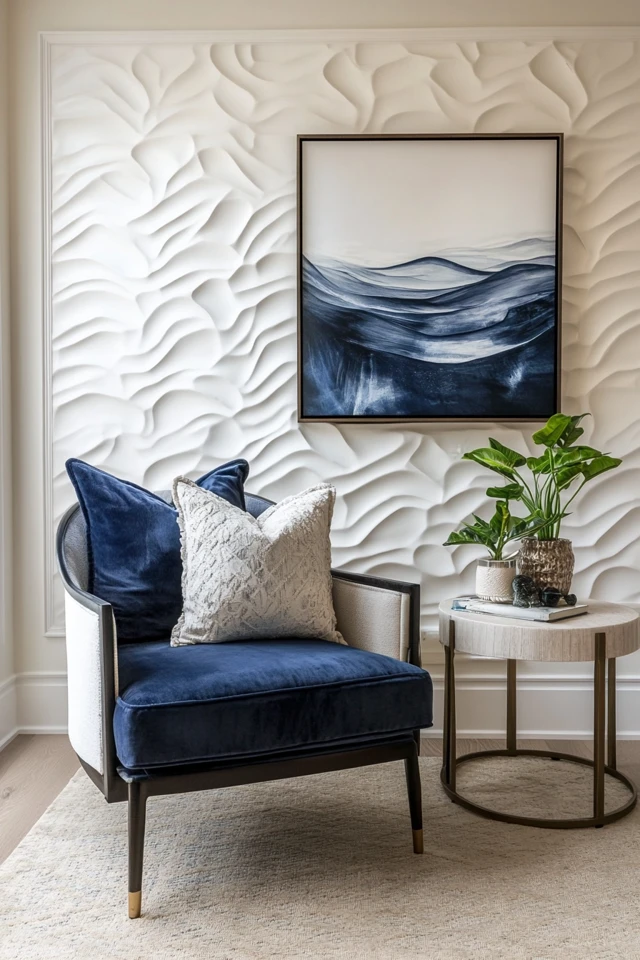
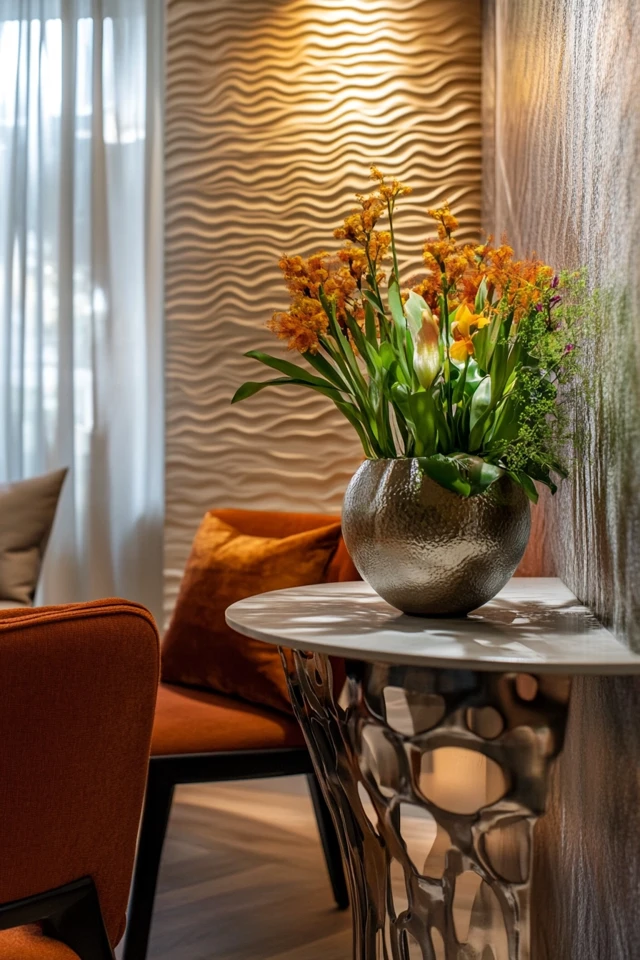
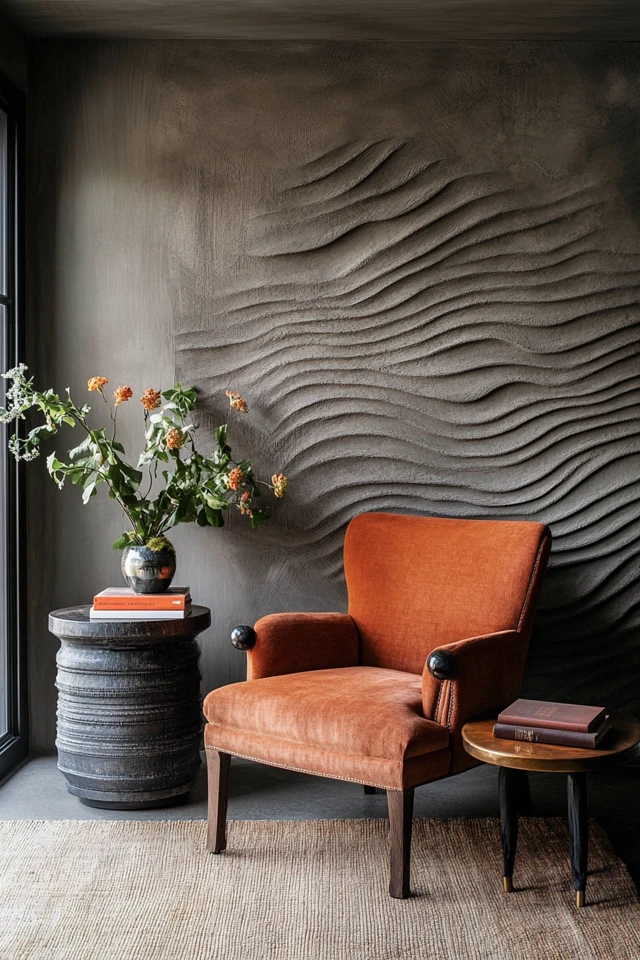
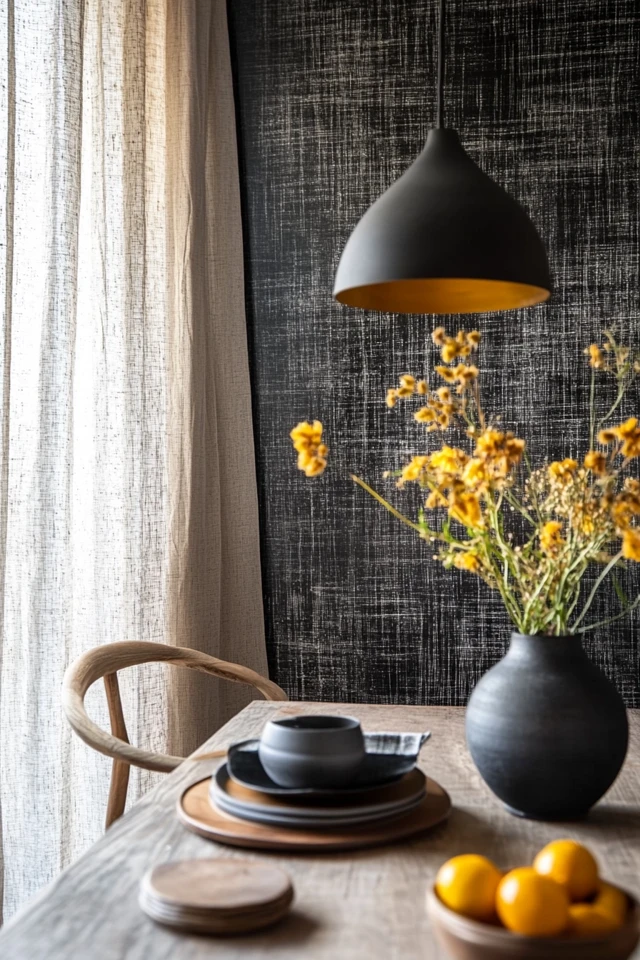
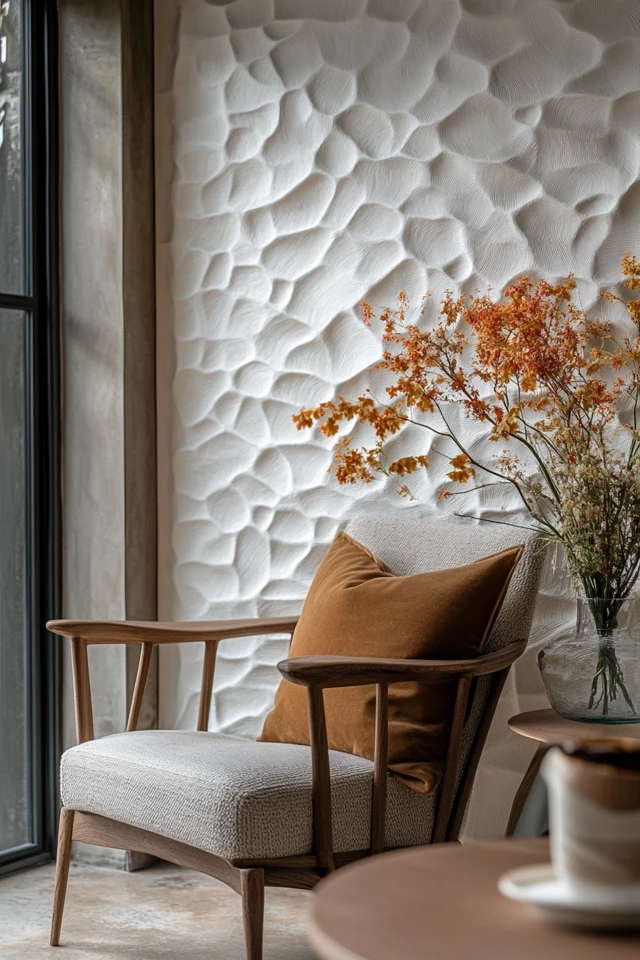

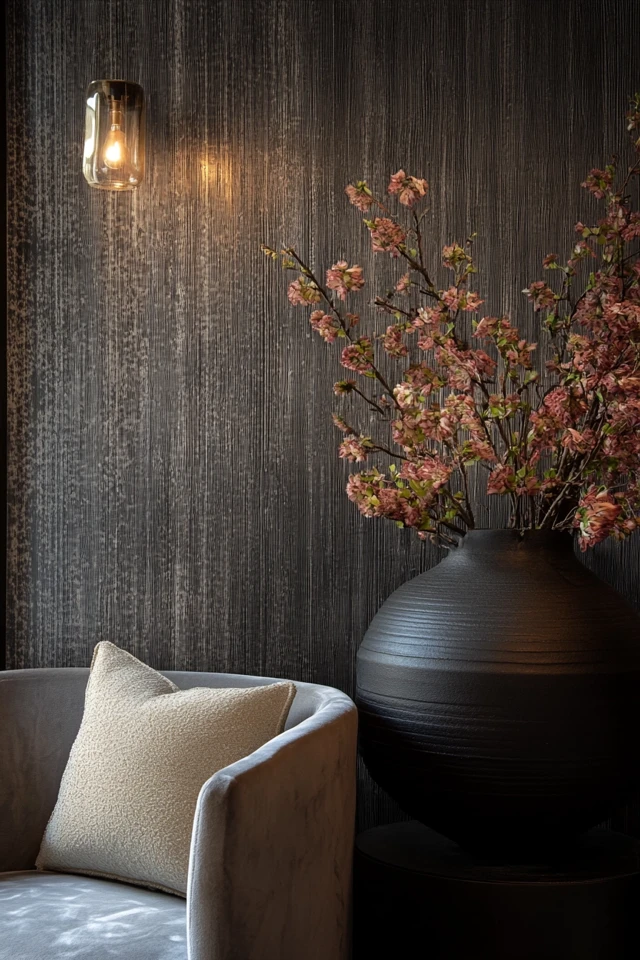
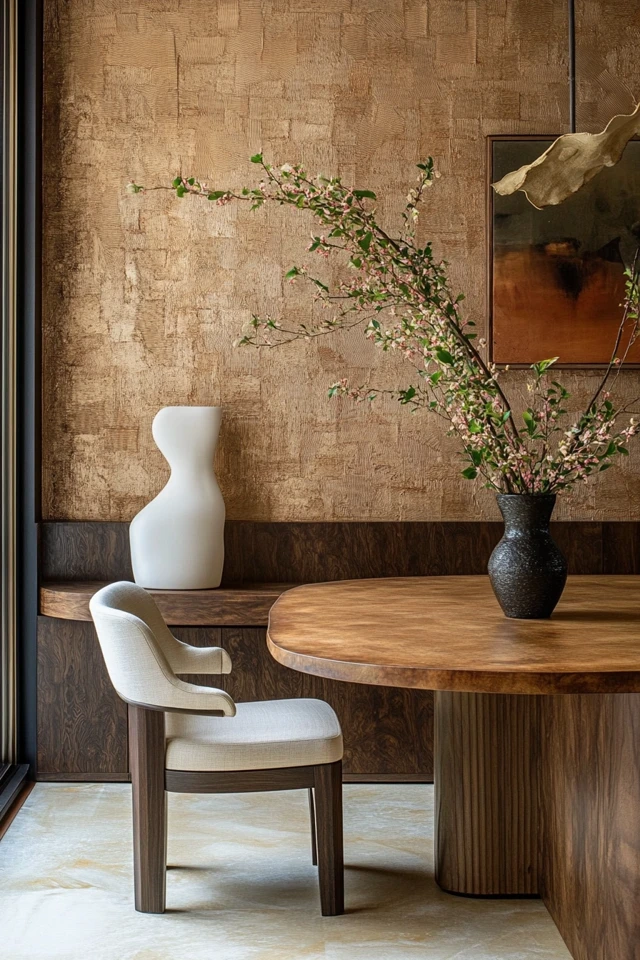
Why Textured Walls Work in Small Spaces
When used strategically, textured walls can make small spaces feel larger, cozier, and more visually interesting. Here’s why they work so well:
- Illusion of Depth: Texture creates shadows and highlights, giving the illusion of depth and dimension that makes walls recede or expand visually.
- Focal Point: A textured wall can serve as a focal point, drawing attention to a specific area and reducing the emphasis on the room’s size.
- Cohesion: Texture helps tie the elements of a room together, creating a unified design even in a compact space.
- Personalization: Textured walls add character and charm, helping small spaces feel unique and less generic.
- Versatility: From subtle to bold, textures can be tailored to fit any style, ensuring they enhance the room without overpowering it.
Design theory highlights that texture plays a crucial role in creating balanced and engaging interiors. By incorporating textured walls thoughtfully, you can add depth and character without making your space feel cluttered.
How to Make Textured Walls Work in Small Spaces: Step-by-Step
1. Choose the Right Wall
- In small spaces, less is often more when it comes to textured walls:
- Use texture on a single accent wall rather than every wall to avoid overwhelming the space.
- Highlight walls that naturally draw attention, such as those behind a bed, sofa, or dining table.
- Avoid heavily textured walls on opposite sides of the room, as this can make the space feel boxed in.
2. Opt for Subtle Textures
- In small spaces, subtle textures often work better than bold ones:
- Consider shiplap, wainscoting, or smooth plaster for a refined, understated look.
- Use grasscloth wallpaper or linen-textured paint for a soft, organic feel.
- If you prefer bold textures, choose muted colors to balance the visual impact.
3. Play with Color and Contrast
- The color of your textured wall can make a big difference in how it affects the room:
- Use light, neutral tones to keep the room feeling open and airy.
- Pair darker textures with light-colored walls or furniture to create contrast without overwhelming the space.
- Monochromatic color schemes can make textured walls blend seamlessly into the room.
4. Incorporate Vertical or Horizontal Lines
- Linear textures can elongate or widen the perception of a room:
- Vertical shiplap or beadboard makes walls appear taller, which is ideal for spaces with low ceilings.
- Horizontal paneling or brickwork can make a narrow room feel wider.
- Chevron or herringbone patterns add dynamic movement while enhancing visual interest.
5. Balance with Smooth Surfaces
- To prevent the room from feeling too busy, balance textured walls with smooth finishes:
- Pair textured walls with sleek furniture, like glossy cabinets or glass tables.
- Use smooth textiles, such as linen or cotton curtains, to complement the texture.
- Keep floors simple with solid-color rugs or polished wood.
6. Use Lighting to Highlight Texture
- Lighting plays a critical role in making textured walls shine:
- Install wall sconces, track lighting, or pendant lights to create shadows and highlights that emphasize the texture.
- Use natural light to bring out the subtle details of textured wallpaper or wood paneling.
- Avoid overly harsh lighting, which can make textures appear too sharp or artificial.
7. Incorporate Functional Design
- Textured walls can serve both aesthetic and practical purposes:
- Use pegboard or slatted walls for decorative storage in kitchens or home offices.
- Add texture with built-in shelving or recessed niches for books, plants, or decor.
- Opt for textured tiles in bathrooms or backsplashes for durability and easy maintenance.
8. Blend with Complementary Textures
- Layer different textures in the room to create a harmonious look:
- Pair a brick accent wall with soft velvet furniture for a warm, inviting vibe.
- Use metallic or glass decor to contrast with rough textures like concrete or wood.
- Add woven baskets, rugs, or cushions to soften the overall aesthetic.
9. Consider Removable Options
- If you’re renting or want flexibility, choose removable textured options:
- Peel-and-stick wallpaper with textured designs offers a temporary solution.
- Foam wall panels or 3D tiles can be installed and removed easily.
- Fabric wall hangings mimic the look of texture without being permanent.
10. Edit and Simplify
- Keep the rest of the room’s design simple to let the textured wall shine:
- Avoid overly busy patterns in furniture, rugs, or curtains that compete with the texture.
- Limit the number of decorative accessories to prevent visual clutter.
- Use a cohesive color palette to unify the space.
FAQ
1. Can textured walls make a small space feel bigger?
Yes! Subtle textures and strategic placement, such as vertical paneling or light-colored wallpaper, can create the illusion of depth and make a small room feel larger.
2. What types of textures work best in small spaces?
Subtle textures like shiplap, grasscloth wallpaper, or lightly textured paint are ideal. Bold textures like exposed brick or concrete can also work if balanced with smooth finishes and neutral tones.
3. How do I maintain textured walls?
Maintenance depends on the material. For example, wipe down painted textured walls with a damp cloth, vacuum fabric-covered walls, and seal porous materials like brick or wood to prevent damage.
4. Can I use textured walls in rental spaces?
Yes! Removable options like peel-and-stick wallpaper, foam panels, or fabric wall hangings allow you to enjoy textured walls without making permanent changes.
5. How do I pair textured walls with furniture?
Choose simple, sleek furniture to balance the texture. Neutral or monochromatic pieces work well, while bold furniture can add contrast to softer textures.
Variations
- Modern Minimalism: Pair smooth concrete walls with monochromatic furniture for a sleek, industrial vibe.
- Rustic Charm: Use reclaimed wood paneling or brick for a cozy, farmhouse-inspired look.
- Eclectic Style: Combine bold, patterned wallpaper with colorful decor and layered textures.
- Bohemian Retreat: Add rattan or bamboo paneling for an organic, laid-back aesthetic.
- Scandinavian Simplicity: Incorporate whitewashed shiplap with light wood and soft textiles for a clean, airy feel.
How to Showcase It
- Living Rooms: Use a textured wall as a backdrop for a sofa, TV, or gallery wall.
- Bedrooms: Highlight the wall behind your bed with textured wallpaper or paneling.
- Kitchens: Add texture to a backsplash or an accent wall near the dining area.
- Bathrooms: Use textured tiles or beadboard to add interest to small powder rooms.
- Entryways: Create a welcoming first impression with a textured feature wall in the foyer.
Occasions to Feature It
- Daily Living: Enjoy the warmth and character textured walls bring to your everyday spaces.
- Seasonal Decor: Highlight textured walls with seasonal accents like garlands, wreaths, or fairy lights.
- Entertaining Guests: Use textured walls as a stunning backdrop for gatherings or celebrations.
- Photo Opportunities: Textured walls add depth and interest to photos, making them ideal for selfies or family portraits.
- Creative Displays: Combine textured walls with artwork, mirrors, or floating shelves for a unique focal point.
Conclusion
Textured walls have the power to transform small spaces, making them feel more dynamic, inviting, and visually engaging. By choosing the right materials, colors, and placements, you can create a design feature that enhances your room’s character without overwhelming it.
Whether you opt for a subtle shiplap accent wall, a bold brick backdrop, or a chic textured wallpaper, the key is balance. Pair textured walls with complementary furnishings, thoughtful lighting, and a cohesive color palette to create a space that feels both stylish and spacious.
So don’t shy away from texture—embrace it! With these tips, your small space will feel more intentional, cozy, and uniquely yours, proving that great design truly is in the details.

